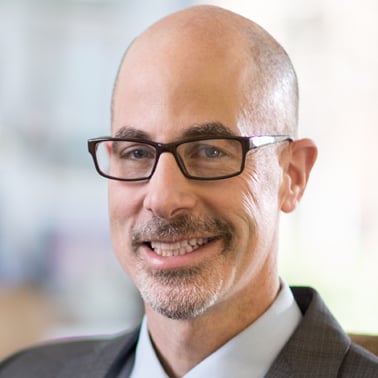The first time I learned what the various medical specialties think of each other when they are not at their most generous, I was very, very young, long before I joined my own shoulder to the wheel of supporting healthcare organizations striving to be habitually excellent. This lesson came from my father, an MD who spanned specialties. Dad was board-certified in nephrology (kidneys), primary care, and gerontology, and for decades practiced them simultaneously. I have heard from his colleagues that he was something of a legend among residents for his patient-centeredness (one of the regional pioneers of the strengths-based interviewing movements) and for his collegiality and strong relationships across disciplines in service of patients.
Yet Dad also loved humor, and would pass on with a twinkle in his eye some of the classic doctor-doctor jokes, such as “What’s the difference between how an internist and a surgeon run for an elevator? The internist puts his hand in to stop the elevator from closing. The surgeon puts his head in.” Ba-dump-Pa.
Re-teaching vs. Systemic Learning
Later, when Dad was “root cause” quizzing me about our work teaching systems thinking and real-time problem solving to prevent recurrence of healthcare safety events, he responded fiercely, sadly, and quietly with an observation of his own. “You know, everywhere I’ve been I have had to work with the emergency departments to help them understand just how vulnerable the kidneys are to the effects of trauma, and how vital it is to protect them from damage in a very timely way. I always wondered why I had to teach that again and again.”
Dad was of course illustrating in plain language the gap that occurs, the harm caused, when we aren’t practicing systemic learning across organizations, or within and across professions.
On the nursing floors and in the clinics, it is all too common when facilitating problem solving around safety incidents to witness behavior that starts with finger-pointing from one discipline to another, and that feels habitual. One day at a famous health system, a head injury patient had been injured in a fall when she went over the handrail in her bed while on a step-down unit. Investigation quickly revealed that she had not been voiding urine (a consequence of the head injury) and many quarts had built up in her bladder. She desperately needed to get to the bathroom but because of her head injury, she couldn’t communicate that to the staff. She suffered bladder damage in addition to the damage caused by her fall. When a pair of urologists were pulled to the fall site as part of the “5 why” analysis to help care for the patient and understand the systems-based cause so it could be prevented from recurring, their first comments were “This happens regularly,” and then “The neurologists won’t listen to us about the risk. The unit doesn’t even have a bladder scanner.” The urologists’ look when they said “the neurologists” said it all.
“We Are Not Going to Do What We’ve Always Done”
We know where this story – uncomfortable perhaps but also obvious and common to those in healthcare – goes. Or do we? A self-reinforcing, longstanding, powerful culture that ensures continuous harm to the many even as it brings the miracles of modern medical specialization to bear for most. One that subtly, or not so subtly, steals much of the power and impact from the typical healthcare institution’s “once over lightly” improvement systems. Does it go here? Or does it become … something better?
“Something betters” are taking place all around us in healthcare, of course, where leaders – formal and informal, among the C-suite and among the professions and specialties, are choosing to lead with great energy and insight, in a fundamentally different way. Just before the pandemic hit, I got the chance to witness a CMO at one of the nation’s leading academic centers inspire, but also insist that a small group of hepatologists and hospitalists work together to solve a serious medication error, together with all the other stakeholders.
Part of the CMO’s scene-setting for the ultimately successful change involved saying “No, we are not going to do what we’ve always done, lob accusations and defensive justifications and counter-accusations back and forth. We are going to learn from the facts, and work together with deep respect for one another to co-design an experiment to try to prevent recurrence.” And then he helped them follow it through.
Leading One Step Up and One Step Down
So systemic change takes that – leading in the moment, from a framework. But it also takes leading one step up, and one step down, I’ll say.
The one step up is about leaders’ unique role and responsibility to see that work systems (clinical flows), improvement systems, and most of all, leadership systems of the organization, are built and operated to continuously reinforce the ideal behaviors required to avoid harm and maximize health. This is all the more imperative because our environment is an explosive combination of complexity, risk and a history of professional siloes that are quick to “other” others (on top of all the other ways we Americans and humans in general do that, as our current reckoning with systemic racism forces us to see). The research and many practical examples of the Shingo Institute are a profound guide for us in how leaders can do that, at least those leaders who recognize, in the words of Paul O’Neill, that leadership is everything about obligation and nothing about privilege.
Clinical professionals, doctors and others, who because of the work they do and the influence they wield, have a continued primary opportunity and responsibility, to build their own personal standard work around these same principles at the heart of continuous improvement.
The “one step down” is about how deep the change within each of us needs to be, no matter our role. Here I will cite another Shingo Guiding Principle to illustrate – leading with humility – and revert again to a son’s pride. Many years ago, I stood in line to register for a routine appointment at the large academic primary care clinic where my Dad was wrapping up his career on staff. When I wrote down my name, the assistant looked up from the desk and asked me “Are you David Segel’s son?” (G-d bless her for ignoring HIPAA in this case). “I am,” I said, and then added, “That guy is trouble, right?” Her eyes got big before she noticed the twinkle in mine. Then she paused and said “No. He’s not trouble. We all love him. He listens to us. He helps us and he helps us learn. And … (here she covered her mouth as if to shield what she was about to say from the higher-ups) “he even eats lunch with us.”
Getting to Habitual Excellence in Healthcare
Leading with humility, true humility, can bring us into relationships and connection and seeing and hearing each other. It helps us and others in the moment get beyond “us vs. them” to the larger purpose, and to the freeing power and energy that comes to “let’s solve this together, without blame, and let’s solve it so it doesn’t recur”; then we see what really important things can be accomplished when that energy is unfurled, together. It gives us the chance, when mated with courage and determination, to do extraordinary things. And do them as a habit.
We don’t yet have anything close to habitual excellence in healthcare, despite the examples of “better” that are all around us. We will know we are on the journey more fundamentally when principles and systems-driven work being done by clinicians and folks on the front lines and in leadership have become so habitual that when they go home, they teach their little ones only the profound lessons they have learned from colleagues, across all lines, and the extraordinary things that they have accomplished together.
The specialty jokes won’t even come up, even with a twinkle in the eye.


Submit a comment